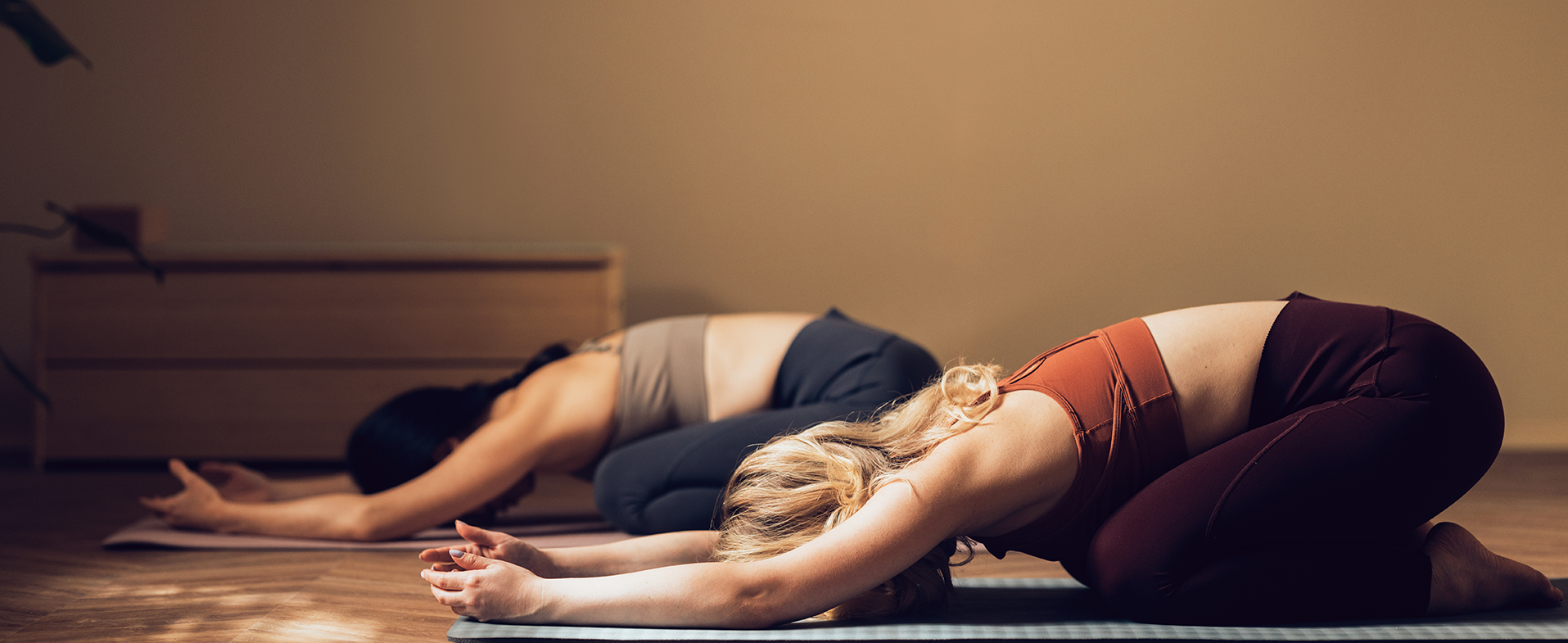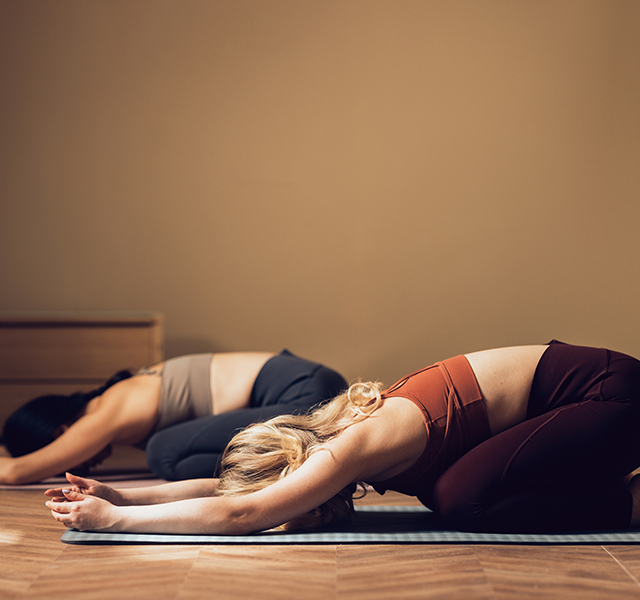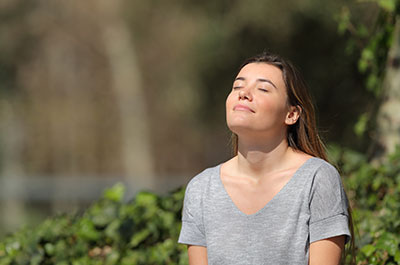When we’re stressed, we can get stuck in worry mode. Want to break the stress cycle? Get out of your head and into your body.
Somatic stretching is a mind-body practice that helps people intentionally reconnect with the sensations in their bodies. It’s a branch of somatic therapy, a form of mind-body therapy that aims to treat stress and trauma.
“Think of somatic stretching as mindful stretching,” says Ronald Benbow, M.S., a clinical exercise physiologist and clinical research coordinator at Henry Ford Health. “It’s all about intentionally bringing your awareness to any type of gentle or mild movement and tuning in to your body’s internal experience.”
And it’s great for managing stress. Here’s how to get started.
What Is Somatic Stretching?
Traditional stretching focuses on increasing flexibility and range of motion. Those stretching routines are great for protecting muscles and joints and staying limber.
Somatic stretching focuses more on bringing your attention to the mind and body to discover the relationship between the two. The practice helps release tension and regulates your nervous system. It does that through intentional gentle movements that help you focus and connect with your body and your breath.
You’ve probably heard of the “fight or flight” response that makes your heart race and your body tense up. The sympathetic nervous system is in charge of that stress response.
On the flip side, the parasympathetic nervous system helps your body rest and relax after periods of stress. “Somatic stretching can prompt the parasympathetic nervous system to engage,” Benbow says.
Somatic stretching exercises come in various formats, including dance, Pilates, tai chi and yoga. In fact, “somatic yoga” classes have been increasing in popularity. But you don’t need yoga experience to benefit from somatic stretching. Grab a mat, chair or a comfy rug to spread out on, and try these movements on for size.
Somatic Stretching Exercises for Beginners
Ready to get started? Don’t worry too much about how long you hold each stretch or how many reps to do. As you move through these exercises, pay close attention to your breath and the way your body feels. The goal is to make mind-body connections to the overall internal experience, Benbow says.
Corpse pose
This relaxing pose is familiar to anyone who has taken a yoga class. Lay on your back with your eyes closed and your arms at your sides. You might want to prop your feet up on a yoga block or pillow or place a pillow beneath your lower back. (If it’s more comfortable, you can also perform this movement seated in a chair.)
“Use props and adjust your body as needed to find a position that feels comfortable to you,” Benbow says. Focus on your body and your breath as you inhale and exhale. Shavasana pose is a great time to practice various types of breathing techniques, Benbow adds. Here are two styles to try:
- Box breathing (square breathing): Breathe in for a count of four, expanding the belly and ribs. Hold for four, then exhale slowly for four, emptying your lungs as completely as possible. Pause for four beats, then repeat the cycle for several rounds.
- Ladder breathing: This yoga breathing technique enhances lung capacity and promotes relaxation. Begin by inhaling for two counts, pausing, then inhaling for another two counts until your lungs are full. After reaching the top of your breath, exhale slowly and completely in one continuous breath. Repeat this pattern for several rounds, focusing on gradually increasing the inhalation steps while maintaining a slow, steady exhale.

Meet With An Exercise Physiologist
Bridge pose
Lay on your back with knees pointing toward the sky and feet flat on the floor, hip-width apart, arms alongside your body. Inhale deeply, then exhale as you press your feet onto the floor and lift your hips towards the ceiling, engaging your glutes and core. Clasp your hands under your back or, if needed, keep hands by your sides for extra support.
Hold the pose for five to 10 breaths. Exhale as you slowly lower your hips back to the floor, one vertebra at a time, and rest for a few breaths.
Cat-cow
Begin on your hands and knees in a tabletop position, with wrists aligned under shoulders and knees under hips. Inhale deeply, then exhale as you round your spine towards the ceiling, tucking your chin to your chest and drawing your belly button towards your spine. This is known as cat pose.
Inhale as you arch your back, allowing your belly to drop towards the mat, lifting your head and tailbone towards the ceiling (cow pose). If needed, keep movements small and gentle, focusing on the breath. Flow between cat and cow poses for five to 10 breaths, synchronizing your breath with each movement.
Chair yoga seated twist
Sit comfortably in a chair with your feet flat on the floor, hip-width apart, hands on your knees. Place a cushion behind your back for added support if needed.
Inhale deeply, then exhale as you rotate your torso to the right, placing your left hand on your right knee and your right hand on the back of the chair. Keep your spine long and shoulders relaxed. “Start with gentle twists then gradually increase the depth as you progress,” Benbow says.
Hold the twist for five to 10 breaths, maintaining steady and even breathing. Inhale as you slowly return to the center, then repeat the twist on the left side. “Listen to your body and don’t twist beyond what feels comfortable,” he adds.
Sit-to-stand progression
Sit on a sturdy chair, close to the edge of the seat. Cross your arms in front of you with each hand on the opposite shoulder. Alternatively, you can reach your arms forward or place hands on your hips. Stand up slowly without using your arms, then slowly sit back down. Focus on the feeling of your body as you stand and sit in slow, controlled movements.
As you move through each exercise, pay close attention to your breath and to the sensations in your body, Benbow says. Where do your muscles feel tight? How does the mat feel against your feet? Does the air feel cool or warm on your skin?
“Focus on the ways your body is moving through space and tune in with all five senses to engage with the environment around you,” he says.
Is Somatic Stretching for You?
Somatic stretching is generally very safe for people of all ages, including older adults. “It’s a good idea to check in with your doctor if you have known movement restrictions, such as orthopedic problems, heart or lung issues, or any other chronic conditions that may need medical clearance before engaging in exercise,” Benbow says. “But for most people, this is a safe activity that you can do at home at your own pace.”
If it sounds simple, that’s the point. Stretching doesn’t need to be complicated to be effective. It’s all about tuning in, slowing down and reconnecting with yourself, Benbow adds. “Most participants in our PREVENT and ExCITE programs report that it feels like a sigh of relief.”
Reviewed by Ronald Benbow, M.S., a clinical exercise physiologist and clinical research coordinator at Henry Ford Health.



